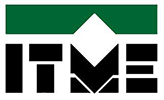Centre of the Future
The Centre for Advanced Materials and Technologies (CEZAMAT) is one of the largest investments in Poland in the field of high-tech research and development. Co-funded by the European Union, the project envisages the establishment of the network of five laboratories equipped with state-of-the-art R&D tools. Laboratories of the Center will allow to carry out new marketable technologies with commercial potential which are supposed to contribute to economic development.
Elite of the Polish science
A large and technologically advanced project as this one requires involvement of the greatest and most prestigious scientific centres in Poland. The project is therefore being implemented by the Consortium comprised of:
- Warsaw University of Technology (Leader of the Consortium)
- Institute of Physical Chemistry, Polish Academy of Sciences
- Institute of Physics, Polish Academy of Sciences
- Institute of High Pressure Physics, Polish Academy of Sciences
- Institute of Fundamental Technological Research, Polish Academy of Sciences
- Institute of Electronic Materials Technology
- University of Warsaw
- Military University of Technology
Internet of Things (IoT)
IoT involves a huge number of communicating devices deployed in our environment as well in object surrounding us. Terms related to IoT such as: Smart Planet, Wireless Sensors Nets (WSN), Smarms, TSensors (trillion sensors), Internet of Everything, Machine to Machine (M2M), Smart Dust give the idea of global and ubiquitous dimension of IoT. Its economical aspect is also hard to be overestimated since none of former High Tech revolutions has reached the volume of trillion-unit market. According to IoT concept objects may directly or indirectly collect, process or exchange data through a network of communicating sensors. CEZAMAT will develop wireless sensors networks (WSN) including materials, technologies and components for their construction. CEZAMAT wishes to be part of Internet of Things trend and will give priority to the most promising cutting-edge research areas in the field, such as:
- photonics, optoelectronics
- biosensors and chemical sensors
- new semiconductors, heterogeneous systems
- analogue and digital design, circuits design, system solutions for IoT and WSN
- nanotechnology
- MOEMS, NEMS, actuators, detectors
- energy harvesting and storage
- nanotubes, GaN and SiC
- imaging and spectroscopy, TzH, high frequency
- communication, in particular wireless
- software development
- advanced materials
- bio engineering
Cybersecurity on circuits level
Secure electronic circuits and microsystems (e.g. for IoT or other critical applications) require special approach at all stages, from design, all through manufacturing process. CEZAMAT has all the potential and means to contribute in developing the appropriate methodology of integrated circuits and systems designing, and technology of fabrication. One of the potential strategies is Split Manufacturing.
Split Manufacturing
Idea of Split Manufacturing evolved as a way to provide national-secure microelectronic components production for strategic applications such as governmental infrastructure, medical devices and military and security systems. Split Manufacturing of integrated circuits prevents hardware trojans attacks and minimizes risk of encompassing back doors into strategically sensitive systems, while preserving economic effectiveness in manufacturing costs. The concept also prevents use of forged circuits in critical infrastructure. CEZAMAT has brought this idea into attention of European community, promoted it and was able to bring together excellent partners from (so far) France and Germany to work together on this issue.
Terahertz technology
Terahertz technologies based on HF GaN components allows for development of all new range of devices and services. Terahertz radiation is highly selective and neutral for health. Therefore, this non-invasive radiation suits perfectly for remote shape recognition and remote chemical composition recognition, including remote identification of illegal or hazardous substances. Terahertz scanners are the class of devices that recently imaging functionality and role. Terahertz technology is essential know-how in development of compact scanners applicable as:
- real time chemical and biological inspection systems and mobile laboratories for security services such as police and border guards
- production quality real time control systems for wide range of industries such as drug industry and food industry
- fast medical imaging and diagnostics systems deployed in hospitals but also mobile devices for emergency
Unique R&D platform
CEZAMAT is open to innovative ideas. A modern research infrastructure will enable their implementation, up to the stage of their industrial implementation. Our laboratories offer Polish and foreign academics, PhD students, as well as entrepreneurs, i.e. everyone interested in creating innovations, the possibility of developing their projects.
CEZAMAT is a network of specialized laboratories, which comprises:
- The Central Laboratory – multidisciplinary laboratories located on the premises of the Warsaw University of Technology, at Poleczki St., Warsaw
- Advanced laser nanotechnologies laboratory, Military University of Technology, at gen. Sylwestra Kaliskiego St., Warsaw
- Advanced spectroscopic and magnetical properties characterization laboratory, Institute of Experimental Physics, University of Warsaw, at Hoża St., Warsaw
- Nitrides quantum structures and their advanced characterization techniques laboratory, Institute of High Pressure Physics (PAN), at Prymasa Tysiąclecia Av., Warsaw
- Precision chromium masks and micro-optical diffraction structures fabrication laboratory, Institute of Electronic Materials Technology, at Wólczyńska St., Warsaw















